Tips to Keep Cats Out of Garden: Simple and Effective Methods
Keeping cats out of your garden can be a challenge, especially if you enjoy spending time tending to your plants. You might be frustrated by finding dug-up flowerbeds or noticing your veggies nibbled on. Your garden can flourish without feline visitors wreaking havoc.
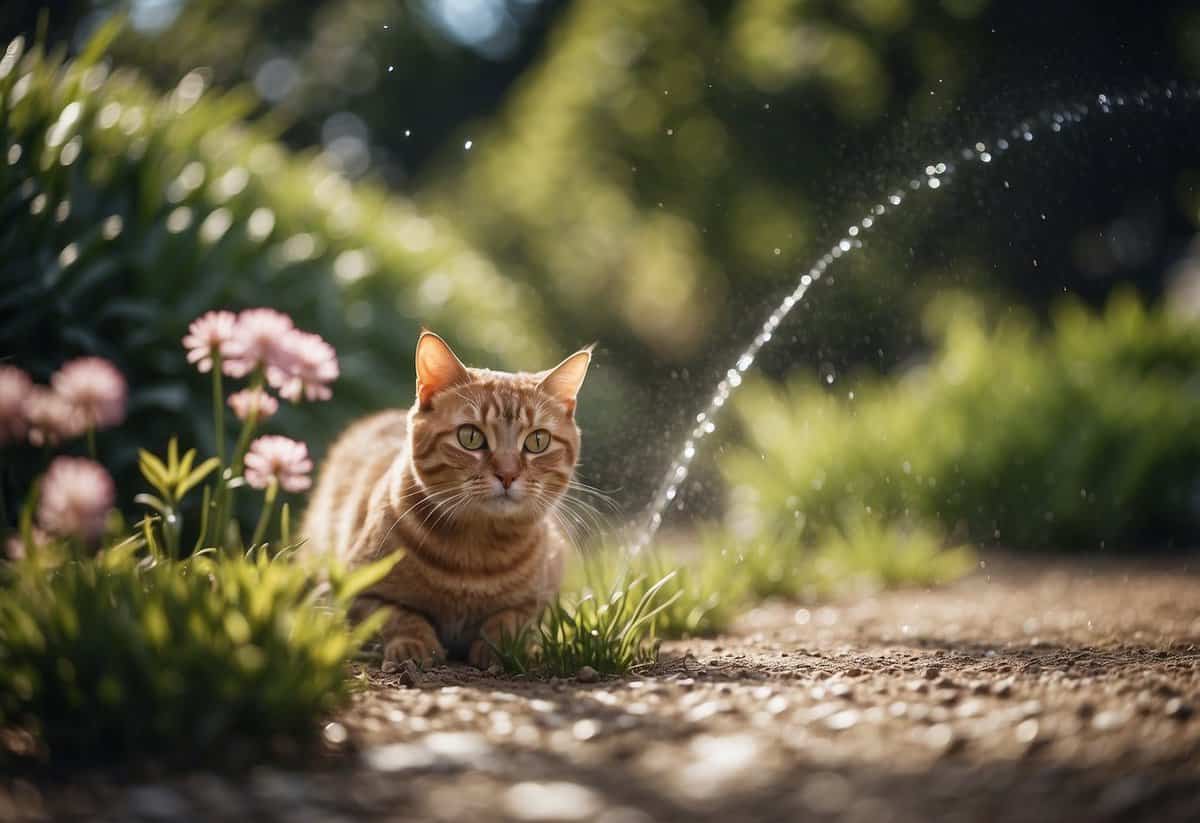
There are many ways to gently keep cats away, ensuring your garden remains a peaceful and productive space. Simple strategies and solutions can help you create a cat-free zone.
1) Install Motion-Activated Sprinklers

Motion-activated sprinklers are a great way to keep cats out of your garden. These devices detect movement and then spray a quick burst of water. Cats usually dislike getting wet, so this can scare them away without harming them.
These sprinklers are easy to set up. Place them in areas where cats often enter. The sudden spray will make them think twice about coming back. For more options, check out the best motion-activated sprinklers for cats.
2) Use citrus peels around the garden
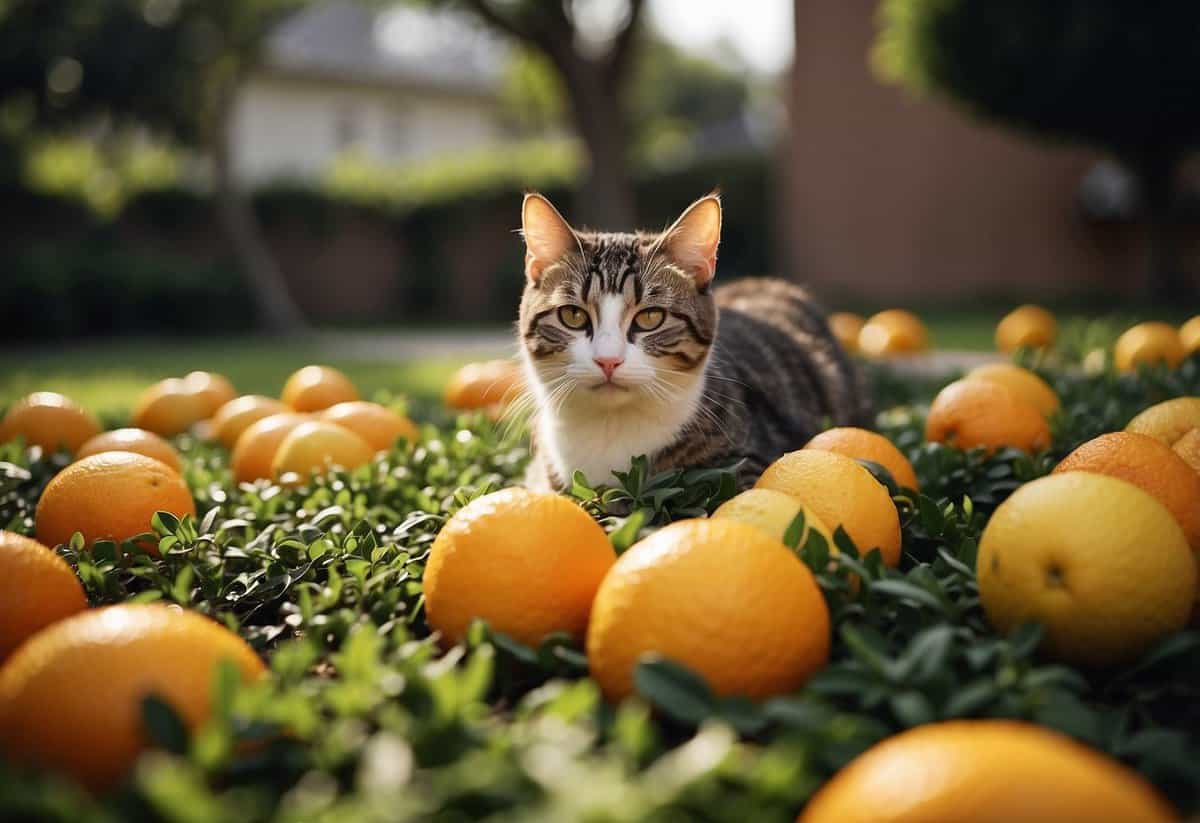
Cats generally dislike the smell of citrus. Scatter orange, lemon, or lime peels around your garden to keep them away.
Refresh the peels regularly to ensure the scent stays strong. This method is safe and natural, causing no harm to your plants.
You can also try using citrus oils or sprays for a longer-lasting effect. This will help maintain the barrier against cats.
3) Cover soil with chicken wire

Using chicken wire to cover the soil in your garden is a great way to keep cats away. Lay the chicken wire flat on the soil and secure it with pins.
Cats don’t like walking on the wire because it feels uncomfortable on their paws.
Additionally, your plants can still grow through the wire without any trouble. Learn more about using chicken wire to repel cats.
4) Create a Designated Cat Area
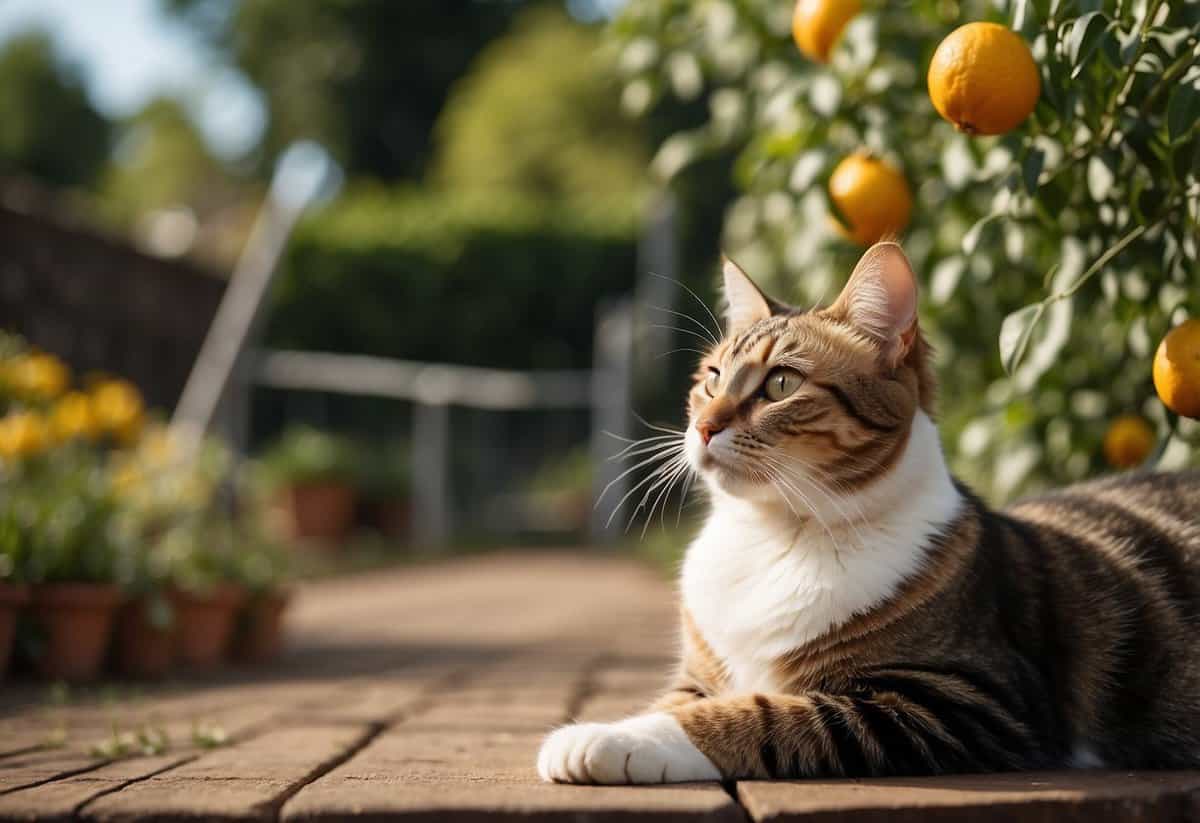
Giving cats their own space can keep them out of your garden. Set up a sandbox or digging area with soft sand. This helps satisfy their digging instincts.
Place a scratching post nearby. Cats love to scratch, and providing a dedicated spot can keep them interested and away from your plants.
Position this area away from your garden beds. This way, cats will be more inclined to stay in their own space rather than roaming through your plants.
5) Plant Thorny Bushes
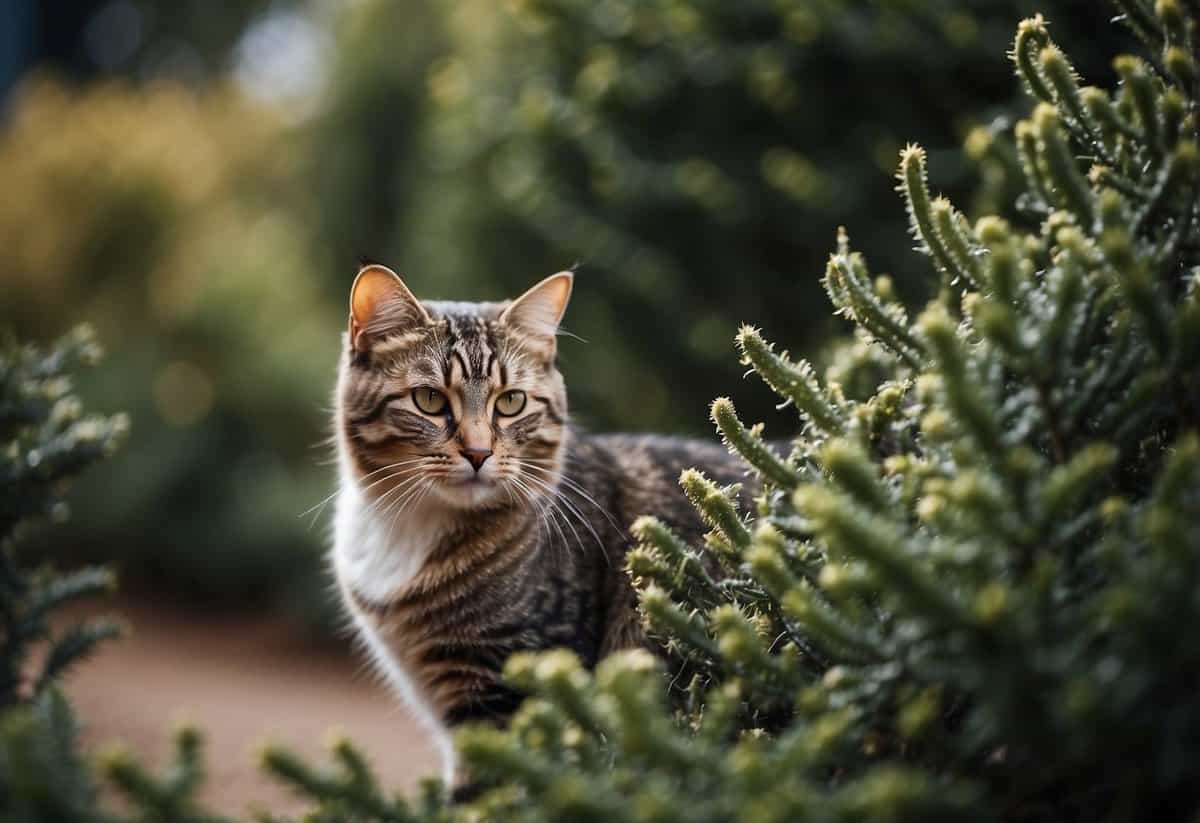
Thorny bushes are a great way to keep cats out of your garden. They work as a natural barrier, discouraging cats from entering.
Consider planting bushes like holly, hawthorn, or roses. These plants have sharp thorns that will make cats think twice about crossing.
You can also try thorny blackberry or prickly pear for extra protection.
6) Use commercial cat repellents

Commercial cat repellents are a useful tool for keeping cats out of your garden. These products often come in sprays or granules that you can apply around the area.
Many repellents work by using the scent of predators like foxes or coyotes, which cats naturally avoid.
For more information on using commercial repellents, you can check out this article.
7) Try Coffee Grounds as a Deterrent
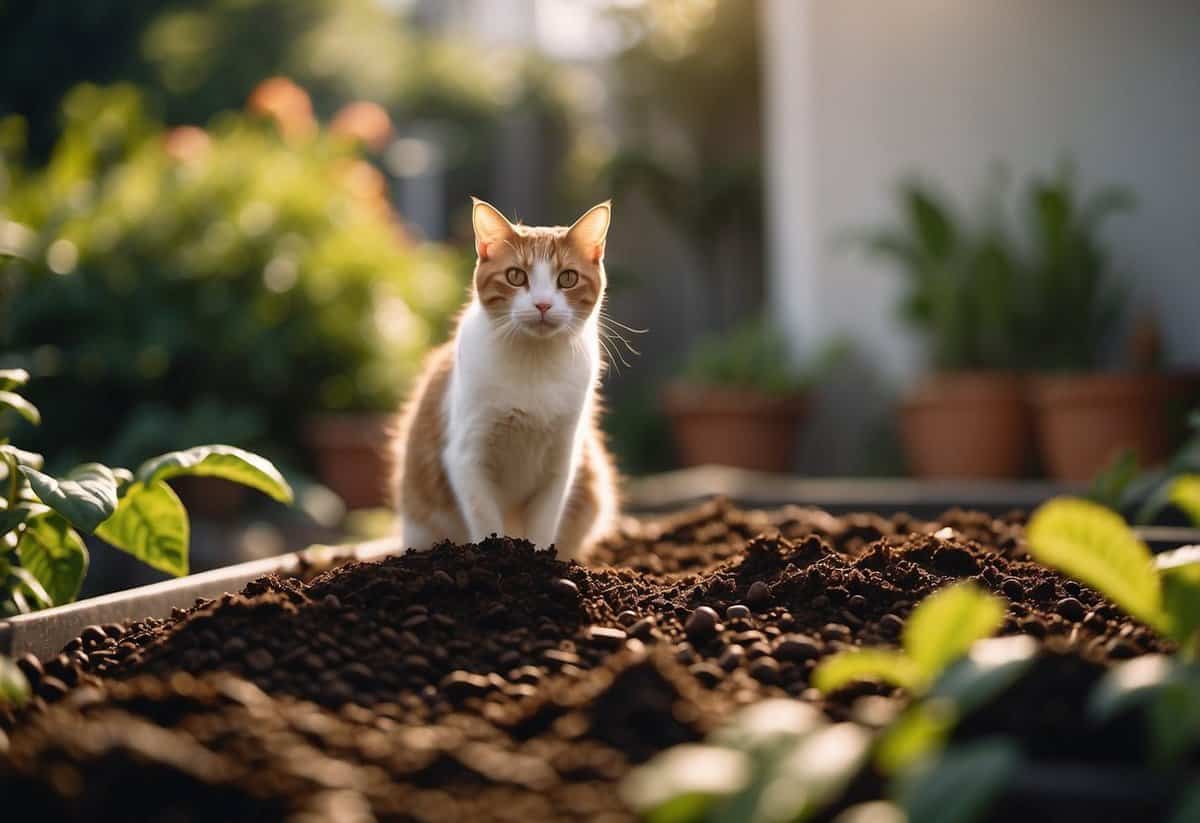
Coffee grounds can be a great way to keep cats out of your garden. Cats dislike strong smells, and coffee grounds have a strong scent that can make your garden less inviting to them.
You can sprinkle the grounds around the edges of your garden or in specific areas where cats tend to visit. This simple method can help keep your plants safe and your garden cat-free.
Remember to replace the coffee grounds occasionally to maintain their effectiveness, as the smell can fade over time. For more details, check out this guide on coffee grounds.
8) Lay Down Wooden Skewers
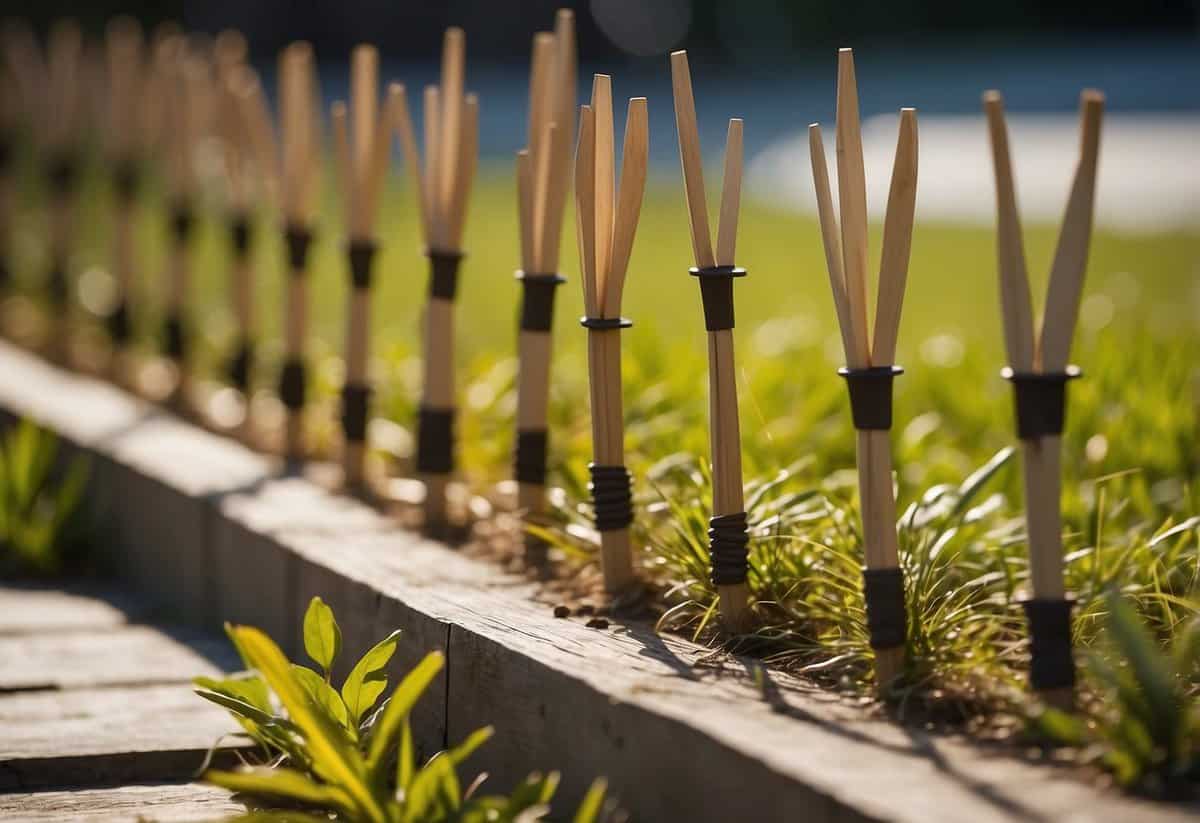
Laying down wooden skewers in your garden can help keep cats away. Place the skewers at various angles and distances, sticking up from the soil.
Cats find it uncomfortable to walk among the skewers, which can deter them without harming them. This is a simple and effective method to protect your plants and keep your garden cat-free.
9) Sprinkle Cayenne Pepper

Sprinkling cayenne pepper can help deter cats from your garden. The spicy scent and taste are unpleasant to them.
To use, sprinkle cayenne pepper powder around the borders of your garden. Focus on spots where cats frequently visit.
You can also mix cayenne pepper with water to make a spray. Apply it to areas that need protection. Always reapply after rain. Be cautious, as it can irritate cats’ eyes and nose if they get too close.
10) Place Ultrasonic Repellents
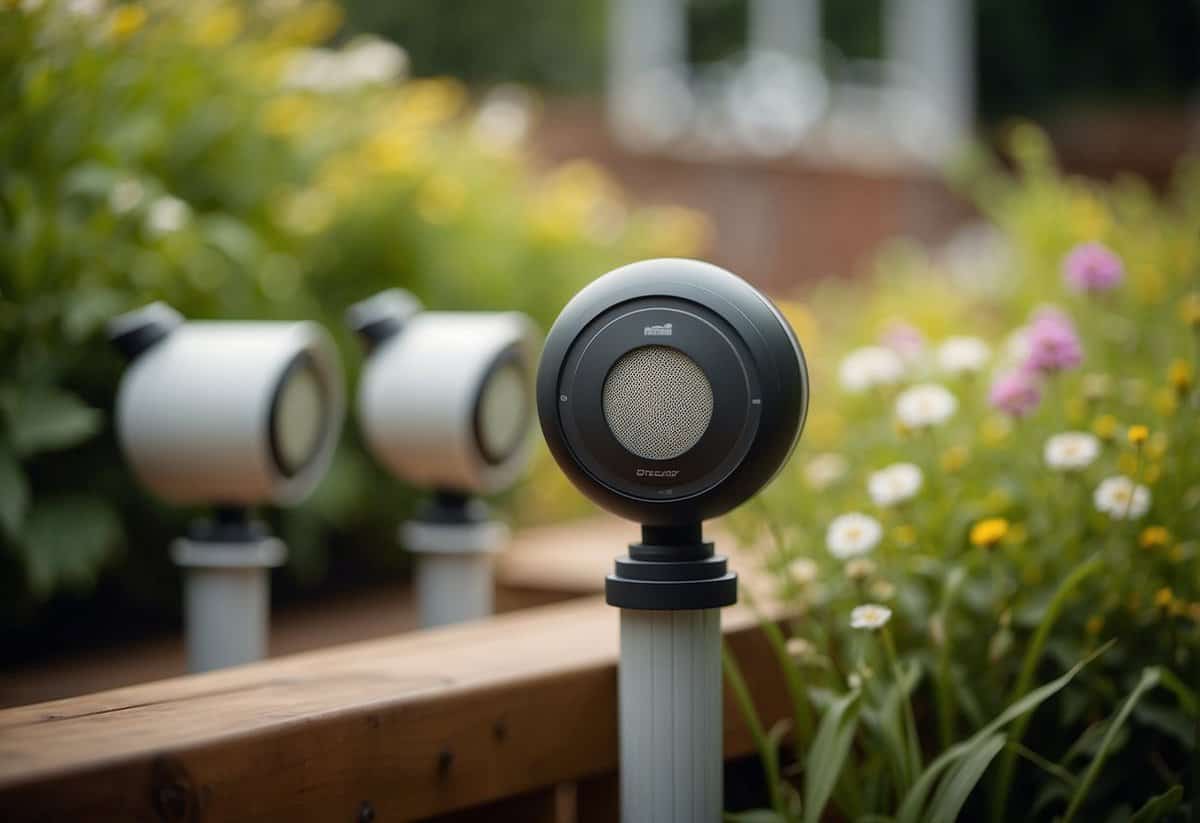
Ultrasonic repellents can help keep cats out of your garden. These devices emit high-frequency sounds that are annoying to cats but not noticeable to humans.
Position the ultrasonic repellents near entry points in your garden. This will help deter the cats from entering the area.
For best results, make sure the devices are placed at the right height and angle.
Understanding Why Cats Enter Gardens

Cats are naturally curious creatures who seek out gardens for various reasons. They are attracted by their instincts, environmental factors, and certain behaviors that appeal to them.
Cats’ Natural Instincts
Cats have a natural instinct to hunt and explore. Gardens provide an ideal setting for these activities. The bushes, trees, and plants offer hiding spots that attract cats looking for small prey like birds and insects.
The texture of garden soil is another attraction. Cats enjoy digging and may use your garden as a giant litter box. This is part of their natural behavior of marking territory. Additionally, gardens offer new smells and sights, making them appealing areas for cats to investigate.
Environmental Factors Attracting Cats
Food sources are a big draw for cats. Gardens often have plenty of small animals like mice and birds that cats love to chase. Even bird feeders can attract cats, as they bring birds into the garden.
Water sources are another reason cats visit gardens. A birdbath or a small pond can be very enticing. Gardens also offer shelter and safety. Bushes and tall plants provide a sense of security where cats can rest without being easily noticed.
Common Cat Behaviors To Watch For
One common behavior is scratching. Cats have a need to sharpen their claws, and garden furniture or trees can become their target. They may also dig in your garden beds, displacing plants or using the area as a toilet.
Cats are also known to roam. They have a territory that they patrol daily, and your garden might fall within their route. Finally, social interactions can play a role. If you have pets or if there are other cats in the neighborhood, a cat may come into your garden to interact or establish dominance.
Understanding these behaviors and factors helps to manage and discourage unwanted feline visitors. This awareness can guide you in choosing effective deterrents to keep your garden cat-free.
Cat-Friendly Alternatives

To keep cats out of your garden while still providing them with a safe and enjoyable space, consider creating designated cat zones and designing specific areas just for them. These alternatives can help ensure both your garden and your feline friends thrive.
Creating A Cat Zone
A cat zone is a specific area set up for your cats to play and relax. You can build this by adding elements like scratching posts, cat trees, or cozy shelters.
You might also use tall grasses or shrubs for hiding spots. Another idea is to install some climbing structures. Cats love to climb and perch on high spots, so adding shelves or platforms can keep them entertained.
Using natural materials and safe plants will make the zone attractive to your cats and keep them away from the main gardens. Consider adding some catnip or cat grass for added enjoyment.
Designing A Cat-Friendly Garden Spot
Designing a cat-friendly garden spot involves making a space that caters to their natural behaviors. Start by planting cat-safe plants like catnip, mint, or lavender. These not only attract cats but are harmless if nibbled on.
You can also add soft surfaces like mulch or sand for digging and playing. Water features such as small fountains or shallow bowls can provide fresh drinking water and play opportunities.
Make sure to include shaded areas for resting, especially during hot days. Using non-toxic materials and keeping the spot well-maintained will make it a favorite place for your cats to spend time.
Benefits Of Providing Alternatives
Giving cats their own dedicated areas can bring many benefits. First, it helps protect your main garden by keeping cats away from fragile plants and soil. This can prevent damage and reduce the need for barriers or repellents.
It also keeps cats safe by limiting their exposure to potential garden dangers like toxic plants or sharp tools. Providing engaging, enjoyable spaces can reduce stress for your cats, helping them stay healthy and happy.
Finally, these alternatives allow your cats to exhibit natural behaviors freely, promoting better mental and physical well-being. This ensures harmony between your gardening interests and your pets’ needs.







